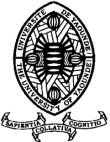Physical Integrity and Bioefficacy of Long-Lasting Insecticidal Nets Against Resistant Anopheles Gambiae s.l. at Ebolowa (Cameroon)
Intégrité Physique et Efficacité Biologique des Moustiquaires Imprégnées d'Insecticide de Longue Durée Contre la Population Résistante d’Anopheles Gambiae s.l. à Ebolowa (Cameroun)
DOI:
https://doi.org/10.5281/hra.v2i6.5734Keywords:
Physical integrity, biological effectiveness, LLINs, EbolowaAbstract
ABSTRACT
Introduction. Cameroon massively distributed long-lasting insecticidal nets (LLINs) between 2004 and 2015. In the Southern Region, 75% of households had access to at least one LLIN, compared with 54% who used them. Despite these efforts, the malaria prevalence rate among children under the age of 05 remained one of the highest (33%), just behind the East Region (35%). To understand the paradox between the high prevalence rate despite the high use of LLINs, the aim of this study was to assess the physical integrity and biological efficacy of LLINs used in households in Ebolowa.
Methods. Physical integrity was assessed by calculating the proportional hole index (pHI) of each net inspected according to WHO recommendations, using the formula: pHI = (n tr1) + (n tr2 × 23) + (n tr3 × 196) + (n tr4 × 576). The biological efficacy of LLINs was assessed by comparing the mortality rate of field mosquitoes with that of sensitive laboratory mosquitoes of the “kisumu” type exposed to used field LLINs on the one hand, and to new LLINs of the same brand on the other. Results. Assessment of physical integrity showed that: 72% was degraded; 20% acceptable and only 8% in good condition. In terms of biological efficacy, all the LLINs tested were effective only against the sensitive laboratory mosquito “kisumu”. PBO-based LLINs are more suitable for vector control in Ebolowa. Conclusion. The majority of LLINs used in Ebolowa households are degraded.They are effective only against laboratory-susceptible mosquitoes. Resistance mechanisms would explain the loss of effectiveness of LLINs against field mosquitoes.
RESUME
Introduction. Le Cameroun a massivement distribué des moustiquaires imprégnées d'insecticide à longue durée d'action (MIILDA) entre 2004 et 2015. Dans la Région du Sud, 75% des ménages ont pu disposer d'au moins une MILDA contre 54% qui en ont fait usage. Malgré ces efforts, le taux de prévalence du paludisme chez les enfants de moins de 05 ans y est resté l’un des plus élevé (33%) juste derrière la Région de l'Est (35%). Pour comprendre le paradoxe entre le taux élevé de prévalence malgré la forte utilisation des MILDA, l'objectif de cette étude était d'évaluer l'intégrité physique et l'efficacité biologique des MILDA utilisées dans les ménages à Ebolowa. Méthodes. L'intégrité physique a été évaluée en calculant l'indice proportionné de trou (pHI) de chaque moustiquaire inspectée suivant les recommandations de l'OMS, selon la formule : pHI = (n tr1) + (n tr2 × 23) + (n tr3 × 196) + (n tr4 × 576). L'efficacité biologique des MILDA était évaluée en comparant le taux de mortalité des moustiques de terrain à celui des moustiques de laboratoire sensibles de type "kisumu" exposés aux MILDA usagées de terrain d’une part, et aux MILDA neuves de même marque, d’autres part. Résultats. L'évaluation de l'intégrité physique a montré que : 72% était dégradé ; 20% acceptable et seulement 8% en bon état. Pour l'efficacité biologique, toutes les MILDA testées étaient efficaces seulement contre les moustiques sensibles de laboratoire "kisumu". Les MILDA à base de PBO sont plus indiquées pour la lutte anti-vectorielle à Ebolowa. Conclusion. La majorité des MILDA utilisées dans les ménages à Ebolowa sont dégradées. Elles sont efficaces seulement contre les moustiques sensibles de laboratoire. Les mécanismes de résistance expliqueraient la perte d'efficacité des MILDA contre par les moustiques de terrain.
References
Allan R, O’Reilly L, Gilbos V, Kilian A. An observational study of material durability of three World Health Organization Recommended long-lasting insecticidal nets in Eastern Chad. Am J Trop Med Hyg. 2012; 87:407-11.
Antonio-Nkondio, C., Ndo, C., Njiokou, F., Bigoga, J.D., Awono-Ambene, P., Etang, J., Ekobo, A.S., Wondji, C.S. Review of malaria situation in Cameroon: technical viewpoint on challenges and prospects for disease elimination. Parasit Vectors. 2019;12: 501.
Asidi A, N’Guessan R, Akogbeto M, Curtis C, Rowland M. Loss of household protection from use of insecticide-treated nets against pyrethroid-resistant mosquitoes, Benin. Emerging infectious diseases. 2012;18(7):1101.
Azondekon R, Gnanguenon V, Oke-Agbo F, et al. A tracking tool for long-lasting insecticidal (mosquito) net intervention following a 2011 national distribution in Benin. Parasit Vectors. 2014 ; 7:6. doi: 10.1186/1756-3305-7-6.
Bakwo, E., Akono-Ntonga, P., Belong, P., Messi, J. Contribution of mosquito vectors in malaria transmission in an urban district of Southern Cameroon Journal of entomology and nematology. 2010; 2: 13-17.
Bhatt S, Weiss D, Cameron E, Bisanzio D, Mappin B, Dalrymple U, et al. The efect of malaria control on Plasmodium falciparum in Africa between 2000 and 2015. Nature. 2015;526(7572):207.
Boussougou-Sambe ST, Awono-Ambene P, Tasse GC, Etang J, Binyang JA, Nouage LD, et al. Physical integrity and residual bio-efficacy of used LLINs in three cities of the South-West region of Cameroon 4 years after the first national mass-distribution campaign. Malar J. 2017; 17;16(1):31. doi: 10.1186/s12936-017-1690-6. PMID: 28095873; PMCID: PMC5240192.
Delbene R. Etude socio-économique. Concession Forestière No 1050, UFA 09-017 et 09018. Département de la Mvila. Arrondissement d'Ebolowa et de Mvangan. MINFOF. Cameroun. 2003; 433.
Diouf M, Diouf EH, Niang EAH, Diagne CT, Konaté L, Faye O. Evaluation of Physical Integrity and Biological Efficacy of Two Types of LLINs Aged 5 to 36 Months Sampled in 11 Districts of Senegal. Bull. Soc. Pathol. Exot. 2018 ; 111:126-131.
: Efa S, Elanga-Ndille E, Poumachu Y, Tene B, Mikande JZ, Zakariaou N, Wondji CS, Ndo C. Insecticide Resistance Profile and Mechanisms in An. gambiae s.l. from Ebolowa, South Cameroon. Insects. 2022; 13: 1133. https://doi.org/ 10.3390/insects13121133
Enquête démographique de santé. Rapport Minsanté. 2018 ; 255-283.
Etang J, Nwane P, Piameu M, Manga B, Souop D, et al. Evaluation of New Tools for Malaria Vector Control in Cameroon: Focus on Long Lasting Insecticidal Nets. PLoS ONE. 2013; 8(9): e74929. doi:10.1371/journal.pone.0074929
Etang J, Pennentier C, Piameu M, Bouraima A, Chandre F, Awono Ambene P. When intensity of deltamethrin resistance in Anopheles gambiae (s.l.) leads to loss of long lasting insecticidal nets bio-efcacy: a case study in north Cameroon. Parasit Vectors. 2016;9:132.
Githinji S, Herbst S, Kistemann T, Noor AM. Mosquito nets in a rural area of Western Kenya: ownership, use and quality. Malar J. 2010 ; 9:250. doi: 10.1186/1475-2875-9-250
Kilian A, Byamukama W, Pigeon O, et al. Long-term field performance of a polyester-based long-lasting insecticidal mosquito net in rural Uganda. Malar J. 2008; 7:49.
Kilian A, Byamukama W, Pigeon O, et al. Long-term field performance of a polyester-based long-lasting insecticidal mosquito net in rural Uganda. Malar J. 2008 ; 7:49. doi: 10.1186/1475- 2875-7-49
Menze, B. D., Wondji, M. J., Tchapga, W., Tchoupo, M., Riveron, J. M. & Wondji, C. S. Bionomics and insecticides resistance profiling of malaria vectors at a selected site for experimental hut trials in central Cameroon. Malaria Journal. 2018; 17: 1-10.
Moiroux N, Bio-bangana AS, Djènontin A, Chandre F, Corbel V, Guis H. Modelling the risk of being bitten by malaria vectors in a vector control area in southern Benin, West Africa. Parasites & Vectors. 2013; 6: 71.
Morgan J, Abílio AP, Do Rosario-Pondja M, et al. Physical durability of two types of long-lasting insecticidal nets (LLINs) three years after a mass LLIN distribution campaign in Mozambique, 2008–2011. Am J Trop Med Hyg. 2015; 92:286-93.
N’Guessan R, Corbel V, Akogbéto M, Rowland M. Reduced efficacy of insecticide-treated nets and indoor residual spraying for malaria control in pyrethroid resistance area, Benin. Emerg Infect Dis. 2007b;13(2):199-206.
Ngongang-Yipmo ES, Tchouakui M, Menze BD, Mugenzi LMJ, Njiokou F, Wondji CS. Reduced performance of community bednets against pyrethroid-resistant Anopheles funestus and Anopheles gambiae, major malaria vectors in Cameroon. Parasit Vectors. 2022; 26;15(1):230. doi: 10.1186/s13071-022-05335-2. PMID: 35754045; PMCID: PMC9233849.
Nopowo FN, Offono Enama L, Tsila HG, Mbida Mbida A, Tonga C, Ngo Hondt E, et al. Évaluation de l’efficacité des moustiquaires imprégnées 36 mois après leur distribution dans le Sud Cameroun. Bull Soc Pathol Exot. 2020;113(3):289-297. French. doi: 10.3166/bspe-2021-0159. PMID: 33881248.
Ossè AR, Aïkpon R, Sovi A, et al. Long lasting insecticidal nets use, efficacy and physical integrity in a vector resistance area after a nationwide campaign in southern Benin, West Africa. J Public Health Epidemiol. 2013; 5:325-35.
Pagès F, Orlandi-Pradines E, Corbel V. Vecteurs du paludisme : biologie, diversité, contrôle et protection individuelle. Med Mal Infect. 2007 ; 37:153 – 61.
Programme National de Lutte contre le Paludisme (PNLP). Profil entomologique du paludisme au Cameroun. Programme National de Lutte contre le Paludisme. Rapport Minsanté Cameroun. 2018; 1-81
Programme National de Lutte contre le Paludisme (PNLP). Rapport d’activités. 2020.
Riveron JM, Chiumia M, Menze BD, Barnes KG, Irving H, Ibrahim SS, et al. Rise of multiple insecticide resistance in Anopheles funestus in Malawi: a major concern for malaria vector control. Malaria Journal. 2015;14(1):344.
Shirayama Y, Phompida S, Kuroiwa C, et al. Maintenance behaviour and long-lasting insecticide-treated nets (LLITNs) previously introduced into Bourapar district, Khammouane province, Lao PDR. Pub Health . 2007 ;121:122–9
Silver JB. Sampling the larval population. Mosquito ecology: field sampling methods. 2008:137-338.
World Health Organization. Guidelines for laboratory and field testing of long-lasting insecticidal mosquito nets. 2005 ; 24.
World Health Organization. Guidelines for laboratory and field-testing of long-lasting insecticidal nets. 2013 ; 89.
World Health Organization. World Malaria Report 2021. WHO Global Malaria Programme.https://www.who.int/docs/default-source/malaria/world-malaria-reportsAssessed on December 2021.
Zaim M, Aitio A, Nakashima N. Safety of pyrethroid-treated mosquito nets. Med Vet Entomol. 2000;14(1):1-5.
Downloads
Published
How to Cite
Issue
Section
License
Copyright (c) 2024 Salomon Francis Efa, Emmanuel Elanga-Ndille, Yacouba Poumachu, Billy Tene, Jacqueline Ze Mikande, Njoumémi Zakariaou, Tchoupo Micareme, Mandeng Stanislas , CS. Wondji, Cyrille Ndo

This work is licensed under a Creative Commons Attribution-NoDerivatives 4.0 International License.
Authors who publish with this journal agree to the following terms:
- Authors retain copyright and grant the journal right of first publication with the work simultaneously licensed under a Creative Commons Attribution License CC BY-NC-ND 4.0 that allows others to share the work with an acknowledgement of the work's authorship and initial publication in this journal.
- Authors are able to enter into separate, additional contractual arrangements for the non-exclusive distribution of the journal's published version of the work (e.g., post it to an institutional repository or publish it in a book), with an acknowledgement of its initial publication in this journal.
- Authors are permitted and encouraged to post their work online (e.g., in institutional repositories or on their website) prior to and during the submission process, as it can lead to productive exchanges, as well as earlier and greater citation of published work










